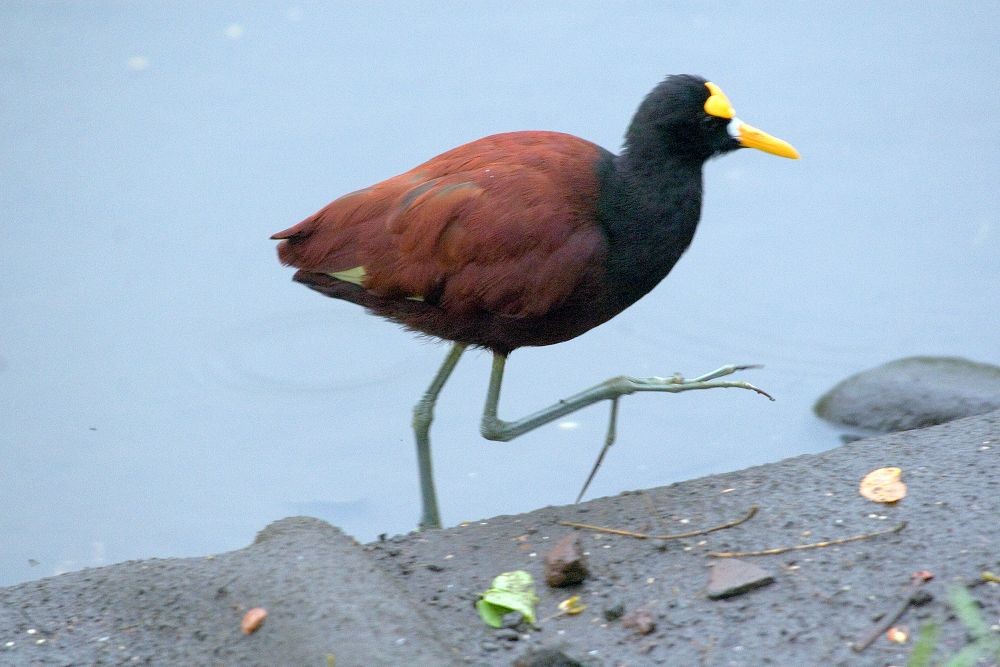Northern Jacana
A species of Neotropical Jacanas Scientific name : Jacana spinosa Genus : Neotropical Jacanas
Northern Jacana, A species of Neotropical Jacanas
Botanical name: Jacana spinosa
Genus: Neotropical Jacanas
Content
Description General Info
 Photo By Photo by David J. Stang , used under CC-BY-SA-4.0 /Cropped and compressed from original
Photo By Photo by David J. Stang , used under CC-BY-SA-4.0 /Cropped and compressed from original Description
The northern jacana has a dark brown body with a black head and neck. In addition its bill has yellow patches and its forehead has a yellow wattle. Its bill has a white base. When a jacana is in flight, its yellowish-green primary and secondary feathers are visible. Also visible are yellow bony spurs on the leading edge of the wings, which it can use to defend itself and its young. The greenish colour of the wing feathers is produced by a pigment, rather rare in birds, called zooprasinin, a copper containing organic compound. Juveniles have a white supercilium and white lores. The female jacana is around twice as big as the male, averaging (145.4g) compared to (86.9g). Jacanas average 241 mm (8 inches)in length with a wingspan averaging 508 mm (20 inches). Young jacana chicks are covered in down and have patterns of orange, browns, black and some white on them. Older chicks are gray and have brownish upper parts. 
Size
23-25 cm (9-10 in)
Life Expectancy
6.5 years
Nest Placement
Floating
Feeding Habits
Northern Jacana primarily consume insects, aquatic invertebrates, seeds, and aquatic vegetation, adeptly foraging from floating vegetation with distinct adaptations for walking on lily pads.
Habitat
Northern Jacana's primary habitat consists of freshwater marshes, especially those with floating or emergent vegetation. This bird is typically found in wet grasslands, and occasionally in flooded fields. Northern Jacana also frequents dry grassy uplands, which are marked by sparse, low-profile vegetation. This species is associated with broad geographical regions with suitable freshwater wetland ecosystems, rather than specific locales, and their non-breeding habitat preferences remain less understood.
Nest Behavior
Northern Jacana exhibits a polyandrous mating system, with one female laying in up to four nests, each maintained by a different male. Males primarily incubate the eggs and nurture the chicks.
Nest Characteristics
The nest of northern Jacana is a flimsy open cup atop marsh vegetation, either standing or floating, in shallow water. Males construct it from local plant material, steadily adding to it during incubation.
Dite type
Insectivorous
General Info
Feeding Habits
Bird food type
Distribution Area
The northern jacana ranges Mexico to Panama, although they occasionally visit the southern United States, with vagrants being seen in places such as Arizona. It mainly lives in coastal areas. Jacanas live on floating vegetation in swamps, marshes, and ponds. 
Species Status
Not globally threatened.
Scientific Classification
Phylum
Chordates Class
Birds Order
Shorebirds Family
Jacanas Genus
Neotropical Jacanas Species
Northern Jacana